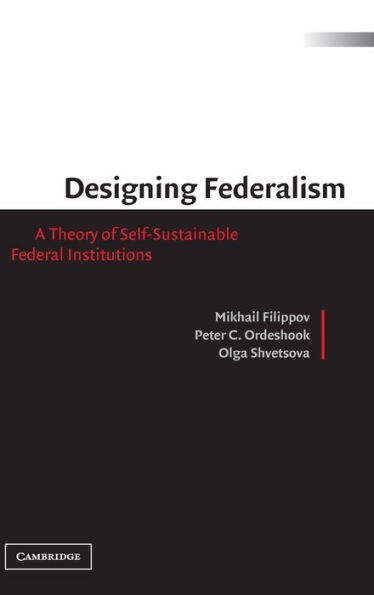5
1
9780521816182


Designing Federalism: A Theory of Self-Sustainable Federal Institutions available in Hardcover

Designing Federalism: A Theory of Self-Sustainable Federal Institutions
- ISBN-10:
- 0521816181
- ISBN-13:
- 9780521816182
- Pub. Date:
- 01/12/2004
- Publisher:
- Cambridge University Press
- ISBN-10:
- 0521816181
- ISBN-13:
- 9780521816182
- Pub. Date:
- 01/12/2004
- Publisher:
- Cambridge University Press
67.0
In Stock

Product Details
| ISBN-13: | 9780521816182 |
|---|---|
| Publisher: | Cambridge University Press |
| Publication date: | 01/12/2004 |
| Pages: | 396 |
| Product dimensions: | 6.26(w) x 9.29(h) x 1.18(d) |
From the B&N Reads Blog
